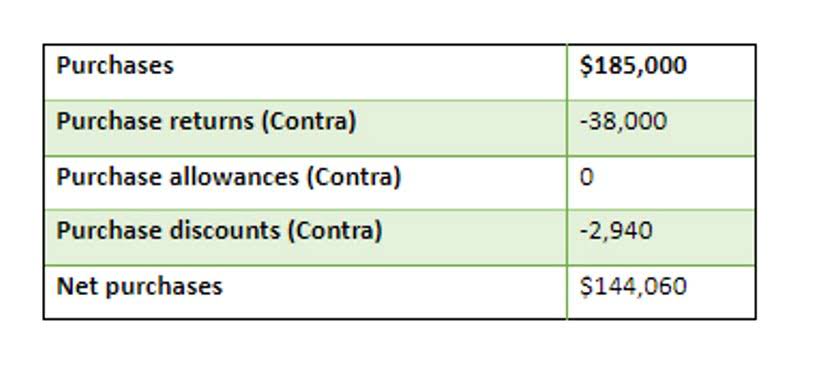
That said, retained earnings can be used to purchase assets such as equipment and inventory. Accordingly, companies with high retained earnings are in a strong position to offer increased dividend payments to shareholders and buy new assets. If your company pays dividends, you subtract the amount of dividends your company pays out of your retained earnings. Let’s say your company’s dividend policy is to pay 50 percent of its net income out to its investors. In this example, $7,500 would be paid out as dividends and subtracted from the current total. Next, look at your income statement (also known as the profit and loss statement) for the current period to find your net income (or loss).
- You can also move the money to cash flow to pay for some form of extra growth.
- While increasing retained earnings may signal financial stability and growth potential, it doesn’t guarantee future success.
- Losses that accumulate over several quarters or years can result in negative shareholders’ equity.
- Retained earnings are a good source of internal finance used by all organizations.
- But small business owners often place a retained earnings calculation on their income statement.
- Businesses can calculate their retained earnings using either historical cost or current cost accounting methods.
Ask Any Financial Question
- Alternately, dividends are cash or stock payments that a company makes to its shareholders out of profits or reserves, typically on a quarterly or annual basis.
- However, companies that hoard too much profit might not be using their cash effectively and might be better off had the money been invested in new equipment, technology, or expanding product lines.
- At the end of the period, you can calculate your final Retained Earnings balance for the balance sheet by taking the beginning period, adding any net income or net loss, and subtracting any dividends.
- For smaller companies, this may be as easy as calculating the number of products sold by the sales price.
- In short, retained earnings are the cumulative total of earnings that have yet to be paid to shareholders.
Use a retained earnings account to track how much your business has accumulated. Paying the dividends in cash causes cash outflow, which we note in the accounts and books as net reductions. You calculate retained earnings by combining the balance sheet and income statement information.
Retained Earnings: Definition, Formula & Example
A surplus in your net income would result in more money being allocated to retained earnings after money is spent on debt reduction, business investment or dividends. Any factors that affect net income to increase or decrease will also ultimately affect retained earnings. Retained earnings refer to the portion of a company’s profits that are reinvested back into the business, rather than being distributed to shareholders.
- Movements in a company’s equity balances are shown in a company’s statement of changes in equity, which is a supplementary statement that publicly traded companies are required to show.
- The statement of retained earnings (retained earnings statement) is a financial statement that outlines the changes in retained earnings for a company over a specified period.
- They both may see them as working capital to pay off high-interest debt or invest in growth that will make the company even more profitable given some more time.
- The higher the retained earnings of a company, the stronger sign of its financial health.
- The company records that liabilities increased by $10,000 and assets increased by $10,000 on the balance sheet.
- Or they can hire new sales representatives, perform share buybacks, and much more.
What is the Normal Balance in the Retained Earnings Account?
This essentially refers to the business’ net profit generated during the period, after subtracting business expenses from your revenue. Because RE is calculated to date, they accumulate from one period to the next. This means that in order to calculate RE for the current accounting period, you’ll need to know your ending balance from the prior period. This ending balance is found in the stockholders’ equity section of the balance sheet as of the end of the prior accounting period. When you own a small business, it’s important to have extra cash on hand to use for investing or paying your liabilities. But with money constantly coming in and going out, it can be difficult to monitor how much is leftover.
A potential buyer might use the equity section of the balance sheet and its line items to decide whether there are assets that could be stripped away without damaging the underlying business. The retained earnings balance can also be used to calculate financial ratios, including debt-to-income and acid-test ratios. the accumulated net amount of revenue less expenses and dividends is reflected in the balance of You can also store receipts, have a choice between cash and accrual accounting, and run reports when you need to. Though cash dividends are the most common payout, remember that stock dividends are another option. Unlike cash payments, stock dividends don’t immediately impact a company’s bottom line.

Retained earnings are a portion of a company’s profit that is held or retained from net income at the end of a reporting period and saved for future use as shareholder’s equity. Retained earnings are also the key component of shareholder’s equity that helps a company determine its book value. After you calculate your beginning retained earnings, you’ll work out your net income. First, make sure your income statement is correct with all expenses and revenues recorded accurately. Then, calculate your income along with your loss while ensuring accuracy; double-check your figures.
A Beginner’s Guide to The Accounting Cycle


